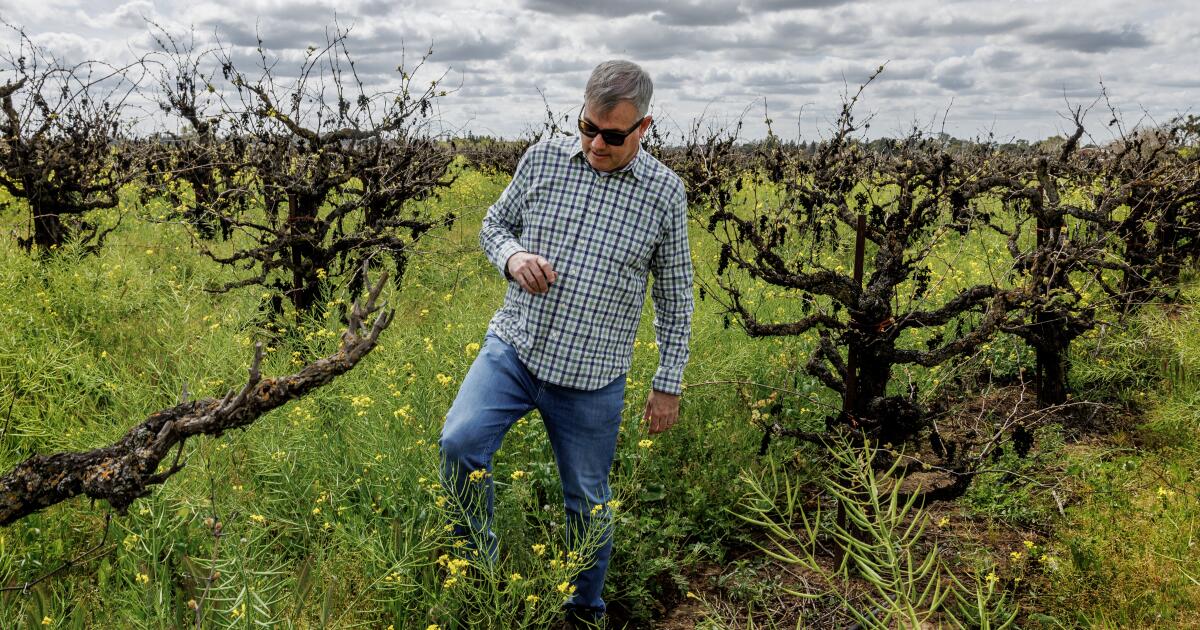California Wine Struggles
Louis Sahagún at Los Angeles Times


Times are getting increasingly tough for many of California’s wine grape growers.
Wine-souring smoke from wildfires, grape-shriveling drought and global warming have all been playing an increasingly detrimental role in state vineyards for at least the last decade.
But those aren’t the only headaches. More recently, a tectonic shift in generational drinking habits has led to a global glut of wine.
Now, struggling California growers have found themselves having to compete with bargain-basement wine prices from overseas growers eager to rid themselves of aging supplies.
“What’s aggravating is that we have grapes that didn’t get picked or sold while the biggest wineries in the state are bringing in cheap bulk wine from overseas,” lamented Lodi Winegrape Commissioner Stuart Spencer.
Here in the heart of San Joaquin County’s prized wine country, thousands of tons of unpicked grapes cling to abandoned vines, and piles of gnarled wood and wire mark vast, uprooted vineyards.
Much of the reason for this, according to Spencer, is that giant California-based wineries have been increasing their purchases of cheap foreign bulk wine, then blending it with vintages produced on either side of Highway 99, about 35 miles south of Sacramento.
Under Federal Tax & Trade Bureau regulations, the resulting blend can be labeled “American wine” if it contains no more than 25% foreign wine.
While the blending of foreign wine with California wine is nothing new, few growers have wanted to complain publicly for fear of losing business from large winemakers. Now however, as the plight of vineyard owners grows, Spencer and others are speaking openly about it.
In March, Spencer shocked the industry by publishing a report entitled, “Imported foreign bulk wine: the dirty secret no one in California wine is talking about.”
“I felt I had to say something about a disturbing aspect of our industry that has been left out of the conversation,” Spencer said.
It is a searing criticism of the industry that has made Spencer, 54, something of a local hero at a time when many wine grape growers are grappling with the impacts of massive wildfires, unprecedented drought, rising labor and equipment costs, COVID-19 mandates and a brutal demographic disconnect around the world that has slowed the market for Cabernet Sauvignon, Chardonnay, Sauvignon Blanc, Zinfandel and Merlot.
Wine, once the height of boomer culture and conspicuous consumption, has lost its cool among young, more frugal and health-conscious potential customers, many of whom prefer cannabis over Cabernet, experts say. In France, the government is spending more than $200 million to destroy excess wine amid plummeting demand. In Australia, vineyards have been forced to stockpile two years’ worth of production due to lack of buyers.
Now, growers in Lodi — the most diverse wine growing region in the U.S., with 125 varieties in production — and across much of the state are being urged by industry representatives to remove tens of thousands of acres of vineyards to balance supply with demand.
Read the rest (subscription probably required)


